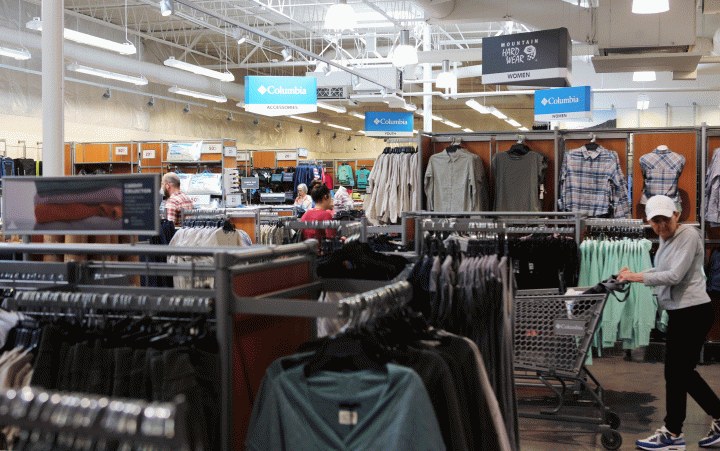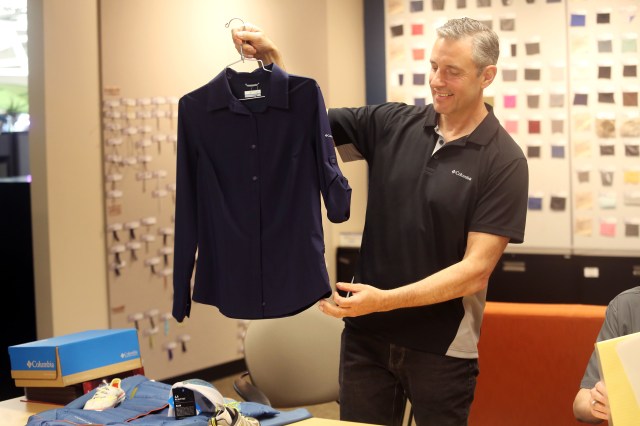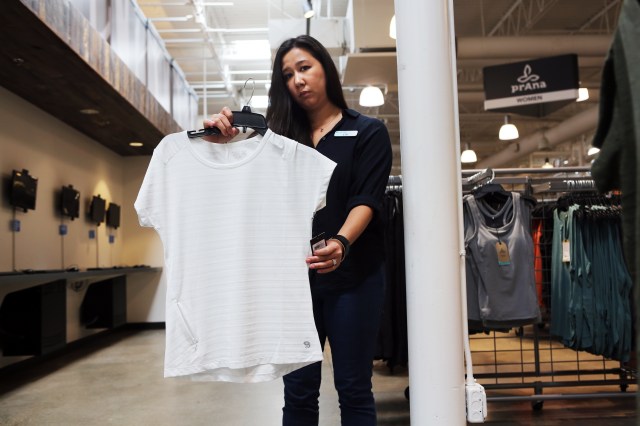
There’s a reason your Columbia shirt has a tiny pocket near your waistline
There’s a reason your Columbia shirt has a tiny pocket near your waistline

These days, most people have a pretty good idea of what tariffs are. They’re an additional tax on goods made in another country, traditionally put into place to protect a homegrown industry. Application of tariffs has been one of the tactics used by the president of the United States in ongoing trade negotiations with China and the European Union.
This story is not about those tariffs. It’s the story of how one company has dealt with tariffs for decades, and the implications that has for stuff you end up buying at the store.
Columbia Sportswear makes outdoor and sports clothing, backpacks and hiking shoes. It has around 6,500 full-time employees and sells more than $2 billion worth of goods each year. The company is headquartered in Beaverton, Oregon, which is just outside Portland. But, like many companies its size, Columbia Sportswear’s products are made all over the world and sold all over the world. Global companies like this one have to think about tariffs.
“I have a whole team of people that work with together with the designers and developers and merchandisers and with customs, actually, and to ensure that during the design process that we’re considering the impact of tariffs,” said Jeff Tooze, the vice president of global customs and trade at Columbia Sportswear.
![Jeff Tooze, Vice President of Global Customs and Trade at Columbia Sportswear, shows off a garment with a "nurse pocket" designed to achieve a lower duty rate.]()
Jeff Tooze, Columbia Sportswear vice president of global customs and trade. ![Kai Ryssdal at Columbia Sportswear headquarters just outside Portland, Oregon.]()
Kai Ryssdal at Columbia Sportswear headquarters just outside Portland, Oregon. ![Peter Bragdon, Columbia Sportswear Executive Vice President, Chief Administrative Officer and General Counsel at Columbia Sportswear headquarters just outside Portland, Oregon.]()
Peter Bragdon, Columbia Sportswear executive vice president, chief administrative officer and general counsel.
Tooze and Peter Bragdon, executive vice president and chief administrative officer, are basically the tariff guys at Columbia Sportswear. They told Marketplace host Kai Ryssdal that Columbia has been doing something they call “tariff engineering” for decades — they design apparel and products in accordance with American tariff policy.
For example, certain women’s garments with “pockets below the waist” get lower duty rates than those without. Because of that, a number of the women’s shirts Columbia Sportswear makes are intentionally designed with tiny pockets near the waistline, which lowers the cost of importing them. One of the company’s shorthands for “pockets below the waist” is “nurse’s pocket.”
An example of one of Columbia’s most popular women’s garments with pockets below the waist is a short sleeve shirt called the PFG Tamiami, which retails on the company’s site for $40 for a standard size, $45 if it’s a plus size.

According to Peter Bragdon, this pocket “is a prime example of how the real designers of apparel and footwear in this country live on Capitol Hill.”
Let’s dig into that a little bit.
Women’s or girls’ blouses, shirts and shirt-blouses of man-made fibers imported from other countries can get tariffed as high as 26.9%. That number is dictated by subhead 6206.40.30 of the Harmonized Tariff Schedule of the United States — a master list of every clothing category you didn’t know existed and their import rates.
But here’s a little loophole: If the garments have “pockets below the waist, a ribbed waistband or other means of tightening at the bottom of the garment,” they get to be excluded from this category.
So if you took that same type of blouse with a 26.9% duty rate and added a pocket or two below the waist, it would instead get tariffed at a rate of 16% (according to subhead 6211.43.1060).
An exception for garments with pockets below the waist dates back to at least 1989, based on our review of U.S. tariff schedules and custom rulings.
A look at the Harmonized Tariff Schedule showing these rules. The third page is from the U.S. Customs and Border Protection’s classification of apparel terminology.
We reached out to more than a dozen trade experts to figure when and why garments with pockets below the waist became their own category. None knew the exact reason, but some hazarded guesses.
“My guess is that an importer which makes blouses with low pockets petitioned Congress to provide a lower tariff rate with the reason that there are not that many U.S.-based manufacturers that make that particular style,” said Bonni von Blarcom, an international trade and customs policy specialist.
Look at tariff codes, and you’ll come across very specific classifications like these. Maybe it’s a woman’s jacket containing 36% or more by weight of wool or fine animal hair, or a girl’s trouser containing 5% or more by weight of elastomeric yarn.
The current duty rate on an item might have been lowered because of a previous trade negotiation. And then that previous rate might have been lowered because of another negotiation, even further back in history. And you can just keep going and going.
“It was Congress that came up with … very obscure classifications, primarily to protect industries and protect some special interests,” according to Frank Samolis, co-chair at the international trade group at the law firm Squire Patton Boggs. “It became very political and … I wouldn’t say corrupt, but you can imagine; there’s just a lot of wheeling and dealing.”
As for the exact rationale for a specific duty rate? It’s usually kind of arbitrary. In other words, no one performed an analysis or a series of calculations and concluded 26.9% to be the perfect number (as opposed to 26.8%).
![Lili Luong, General Manager at Columbia Sportswear Company Employee Store, holding an example of a garment with a "nurse's pocket" or "chapstick pocket" which lowers the duty rate.]()
Lili Luong, general manager at Columbia Sportswear Company Employee Store, holding an example of a garment with a “nurse’s pocket.” ![Apparel designer Becca Johnson at Columbia Sportswear headquarters just outside Portland, Oregon.]()
Apparel designer Becca Johnson at Columbia Sportswear headquarters just outside Portland, Oregon.
Tariffs on textiles have existed since President George Washington signed the first tariff bill into law on July 4, 1789, but they’ve been many times raised (like in the case of the Tariff Act of 1930, also known as Smoot-Hawley) and lowered through multilateral trade negotiations.
“There’s no science,” said Nate Herman, senior vice president of supply chain at the American Apparel & Footwear Association.
So back to those pockets.
“Thankfully, within outdoor, I’m able to use that pocket for a functional purpose. So we usually call it a ‘ChapStick pocket,’ said Becca Johnson, an innovation designer at the company. “We usually try to spin it to something that’s actually functional.”
Check out the map below to see some of the key areas where Columbia exports its items.
There’s a lot happening in the world. Through it all, Marketplace is here for you.
You rely on Marketplace to break down the world’s events and tell you how it affects you in a fact-based, approachable way. We rely on your financial support to keep making that possible.
Your donation today powers the independent journalism that you rely on. For just $5/month, you can help sustain Marketplace so we can keep reporting on the things that matter to you.























